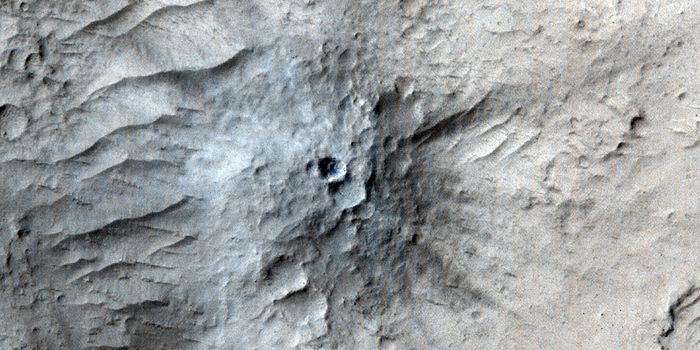Cancer
NCI Melanoma Grant Helps to Fast Track Lab Discoveries into Treatments
SEP 26, 2014 12:00 AM PDT
Share
Death Valley
Anyone who's made the trek to Mammoth Lakes, hiked Mount Whitney, or explored the vast beauty of the Eastern Sierras, has encountered the fork in the road off California highway 395 that leads to Death Valley-home to one of the most talked about mysteries that's plagued scientists and tourists alike.
For more than a century, researchers have questioned the geological phenomenon of Death Valley's moving rocks-commonly referred to as the ‘sailing stones'-which leave visible tracks along the desert floor, showing clear evidence of physical movement. Yet without any witnesses to this phenomenon, scholars have been left to ponder what force is moving the stones composed of dolomite and syenite that can weigh anywhere between a few ounces to an estimated 700 lbs.
The tracks of the sailing stones are found in an area of Death Valley National Park called Racetrack Playa, a dried lake that measures 2.8 miles long and 1.3 miles wide. The area is extremely flat-bearing an incline of only 1.5 inches from north to south. The stones' tracks have dubbed this area the ‘racetrack,' as visitors can witness the paths the stones have traveled along the cracked desert surface-sometimes showing evidence of where a stone has changed directions, traveled alongside a companion stone, or even reversed its trajectory to travel backwards. Racetrack Playa has no vegetation, remains dry the majority of the year, receives 3-4 inches of precipitation annually, and in extreme weather can become covered in ice sheets 1-2.5 inches thick.
Until recently, there have been no scientifically documented reports that have captured the stones in movement.
In a recent paper published in the journal PLOS ONE, a team lead by paleobiologist Richard Norris reported on the findings-and first-hand observations-from their two-year research project into the mysterious sailing stones.
"Science sometimes has an element of luck," Norris said in a news release from Scripps Institution of Oceanography, UC San Diego. "We expected to wait five or ten years without anything moving, but only two years into the project, we just happened to be there at the right time to see it happen in person."
Since the stones are known to move only every few years, time was certainly on Norris' side when he and his team witnessed the stones' subtle movement, and were able to document their findings via video and photos.
To study the sailing stones, Norris' team installed a weather station adjacent to Racetrack Playa and various time-lapse camera systems to view the area; additionally, they placed several GPS-instrumented stones on the surface of the dried lake (playa).
The team of researchers observed the sailing stones in motion on sunny, clear days that followed nights of sub-freezing temperatures. After thin sheets of ice were formed on the playa overnight, morning temperatures and light winds caused floating ice panels to break into pieces that then pushed against nearby stones, moving them from their predetermined positions. The ice panels that were observed in moving the stones were quite thin in nature, measuring 3-6 millimeters in width; and at wind speeds of 4-5 m/s, which is a likened to a light breeze one would encounter during rustling tree leaves. All observed conditions seemed to contradict years of theory that hypothesized thick ice sheets and heavy winds were likely responsible for the sailing stones along the playa.
For more than a century, researchers have questioned the geological phenomenon of Death Valley's moving rocks-commonly referred to as the ‘sailing stones'-which leave visible tracks along the desert floor, showing clear evidence of physical movement. Yet without any witnesses to this phenomenon, scholars have been left to ponder what force is moving the stones composed of dolomite and syenite that can weigh anywhere between a few ounces to an estimated 700 lbs.
The tracks of the sailing stones are found in an area of Death Valley National Park called Racetrack Playa, a dried lake that measures 2.8 miles long and 1.3 miles wide. The area is extremely flat-bearing an incline of only 1.5 inches from north to south. The stones' tracks have dubbed this area the ‘racetrack,' as visitors can witness the paths the stones have traveled along the cracked desert surface-sometimes showing evidence of where a stone has changed directions, traveled alongside a companion stone, or even reversed its trajectory to travel backwards. Racetrack Playa has no vegetation, remains dry the majority of the year, receives 3-4 inches of precipitation annually, and in extreme weather can become covered in ice sheets 1-2.5 inches thick.
Until recently, there have been no scientifically documented reports that have captured the stones in movement.
In a recent paper published in the journal PLOS ONE, a team lead by paleobiologist Richard Norris reported on the findings-and first-hand observations-from their two-year research project into the mysterious sailing stones.
"Science sometimes has an element of luck," Norris said in a news release from Scripps Institution of Oceanography, UC San Diego. "We expected to wait five or ten years without anything moving, but only two years into the project, we just happened to be there at the right time to see it happen in person."
Since the stones are known to move only every few years, time was certainly on Norris' side when he and his team witnessed the stones' subtle movement, and were able to document their findings via video and photos.
To study the sailing stones, Norris' team installed a weather station adjacent to Racetrack Playa and various time-lapse camera systems to view the area; additionally, they placed several GPS-instrumented stones on the surface of the dried lake (playa).
The team of researchers observed the sailing stones in motion on sunny, clear days that followed nights of sub-freezing temperatures. After thin sheets of ice were formed on the playa overnight, morning temperatures and light winds caused floating ice panels to break into pieces that then pushed against nearby stones, moving them from their predetermined positions. The ice panels that were observed in moving the stones were quite thin in nature, measuring 3-6 millimeters in width; and at wind speeds of 4-5 m/s, which is a likened to a light breeze one would encounter during rustling tree leaves. All observed conditions seemed to contradict years of theory that hypothesized thick ice sheets and heavy winds were likely responsible for the sailing stones along the playa.
Sponsored by

You May Also Like
Loading Comments...









